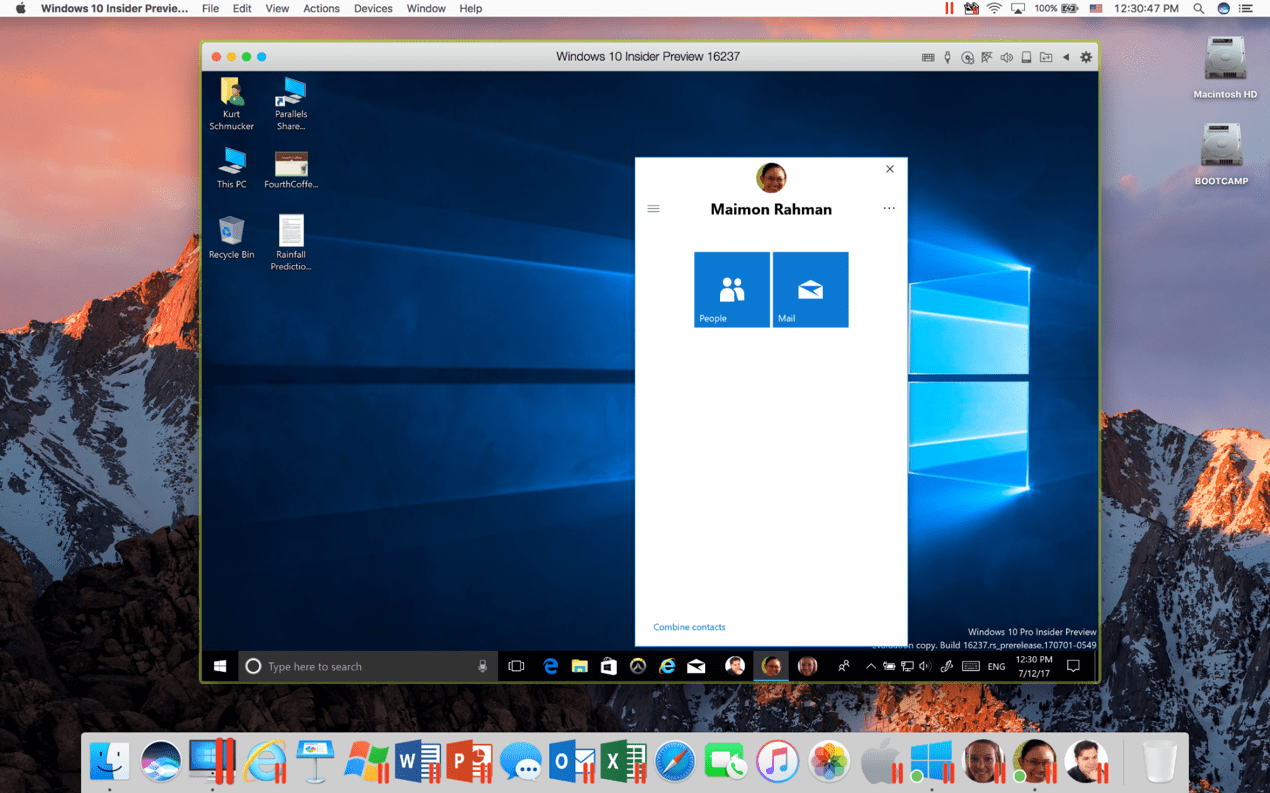

- #HOW TO RIGHT CLICK PARALLELS MAC FOR MAC OS X#
- #HOW TO RIGHT CLICK PARALLELS MAC MAC OS X#
- #HOW TO RIGHT CLICK PARALLELS MAC UPGRADE#
- #HOW TO RIGHT CLICK PARALLELS MAC FULL#
- #HOW TO RIGHT CLICK PARALLELS MAC WINDOWS 7#
But you can see such external environments only if they are on USB-connected storage devices and you've told Parallels to assign that USB device to the Mac VM, which you do via its Devices menu's USB submenu.
#HOW TO RIGHT CLICK PARALLELS MAC MAC OS X#
When you install Mac OS X Lion in the VM, you can use the option to copy an existing Mac OS X Lion environment from a Time Machine backup, or you can use the Migration Assistant utility to transfer another environment's settings and apps to the VM. Wherever the installer resides, the trick is you have to install its internal. Apple also has a tool that lets you create your own installer image on a disk or thumb drive. The installer file is deleted by default once you install Mac OS X Lion, but there are ways to prevent that, as well as to access the hidden copy on your Mac. Instead, you have to open that application package (Control-click or right-click the Install Mac OS X Lion.app file and choose Show Package Contents), then search for and copy out the InstallESD.dmg file containing the disk image. But you can't use the Install Mac OS X Lion file that you downloaded from the Mac App Store.

For example, you can use the Windows DVD install option to select a Mac OS X installation image from your startup disk or from a USB-connected storage device. If you're a savvy Mac user, you can get past these issues. The way Parallels handles Mac OS X installation via the Mac App Store means you can create only clean installs of Lion there's no simple way to transfer an existing Lion environment to the VM as there is for Windows VMs. Virtualizing Mac OS X Lion Unfortunately, Parallels Desktop 7 gives you only one easy way to install Mac OS X Lion on a VM, but it's painful: You download the 4GB installer file from the Mac App Store, which means waiting for one or more hours. (Note: You still can't create VMs of previous Mac OS X desktop versions, as Apple hasn't changed the licensing terms for Snow Leopard or earlier versions to allow it.) Apple removed its restriction against desktop OS VMs in Lion (you're permitted to run two Lion VMs on your Mac), and Parallels quickly enabled that capability in Desktop 7. Previous editions of Parallels let you set up Mac OS X Server VMs, but not VMs of the desktop OS.
#HOW TO RIGHT CLICK PARALLELS MAC UPGRADE#
What might entice you to upgrade to Version 7 is Parallels Desktop's new ability to create Mac OS X Lion VMs, with which you can run virtual Mac instances on your Mac, such as for beta testing or configuration testing.
#HOW TO RIGHT CLICK PARALLELS MAC FULL#
These Parallels Desktop 7 enhancements are welcome, but I'm not sure they're worth the cost of a $50 upgrade ($80 for the full version) to most users - especially just nine months after Desktop 6 was released. Plus, the iOS app works with both Parallels Desktop 6 and 7, so you don't need an upgrade to Parallels Desktop 7 to take advantage of it. Of course, virtual desktop clients for running Mac OS X on iOS are easy to find, and there are good free ones, so the main value of Parallels' enhanced iOS app is the unified virtual desktop. The previous Parallels app for iOS did that just for Windows VMs. The $20 Parallels iOS app from the Apple App Store lets you access both Mac OS X and Windows VMs, as well as the underlying Mac OS X, from an iPad or iPhone. Version 6 can run on Lion as well, but it does not support Lion's new gestures or Mission Control.
#HOW TO RIGHT CLICK PARALLELS MAC FOR MAC OS X#
Parallels 6 Parallels Desktop 7's other enhancements include support for Mac OS X Lion's full-screen mode and Mission Control interface, support for the AES-NI encryption standard for Windows VMs, and easier sharing of printers and the Mac's built-in camera. For most users, I don't think it justifies an upgrade. That's not bad, but keep in mind such synthetic benchmarks tend to overstate what you'd get in real-world performance.
#HOW TO RIGHT CLICK PARALLELS MAC WINDOWS 7#
Overall, PassMark showed Windows 7 running 9 percent faster in Parallels 7 versus Parallels 6. But note that Parallels Desktop does not support DirectX 10, so some video-oriented games and applications won't run. I did get a 44 percent boost for 3D graphics, so gamers and simulators should see a notable improvement. Although Parallels Desktop 7 promises to run graphics 45 percent faster than Version 6, I saw a mere 8 percent improvement in 2D rendering, based on the PassMark benchmarks. If Mac-on-Mac virtualization - the big new capability in Desktop 7 - is the most important next step, then Parallels should have taken a little more time to make it easier, especially for developers and IT users. And the new Parallels Desktop 7 shows just how hard that question is to answer. It's hard to imagine what more a Windows-on-Mac virtualization application might do given the software's undeniable maturity.


 0 kommentar(er)
0 kommentar(er)
